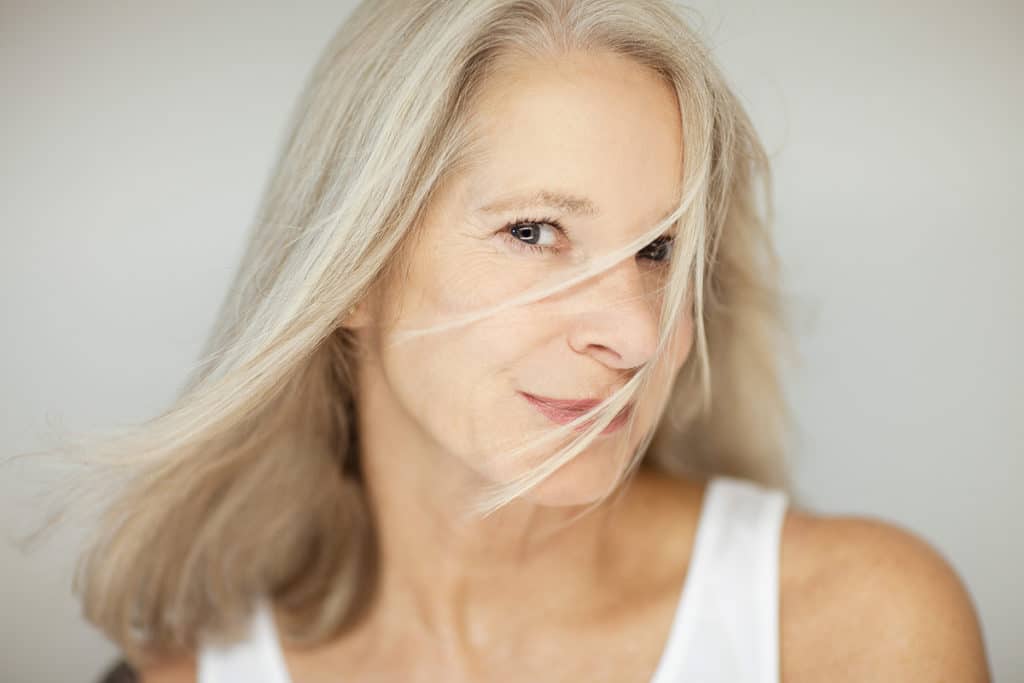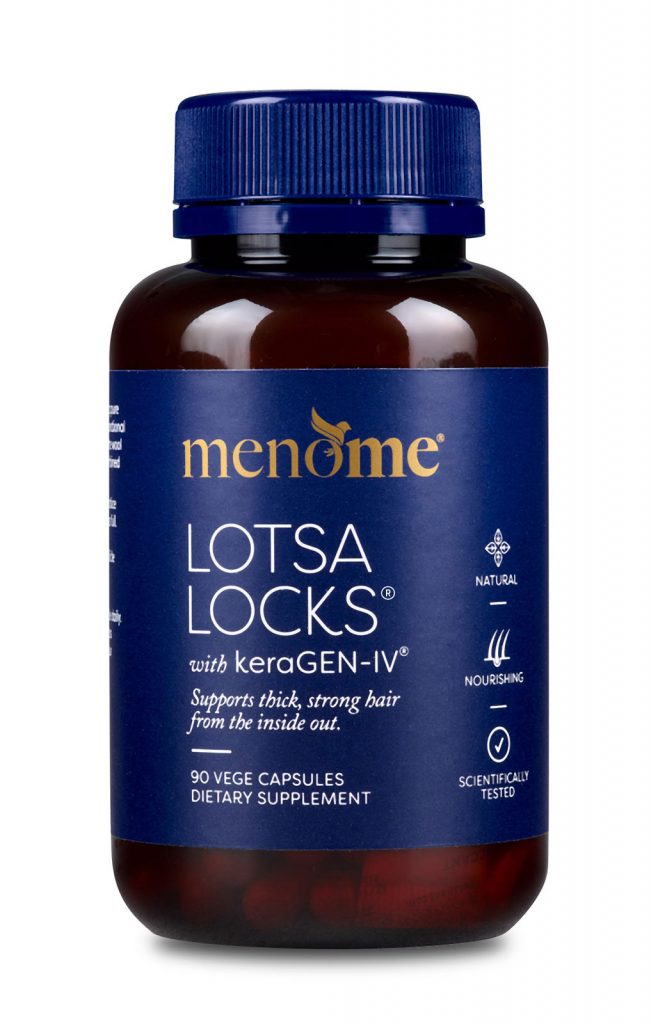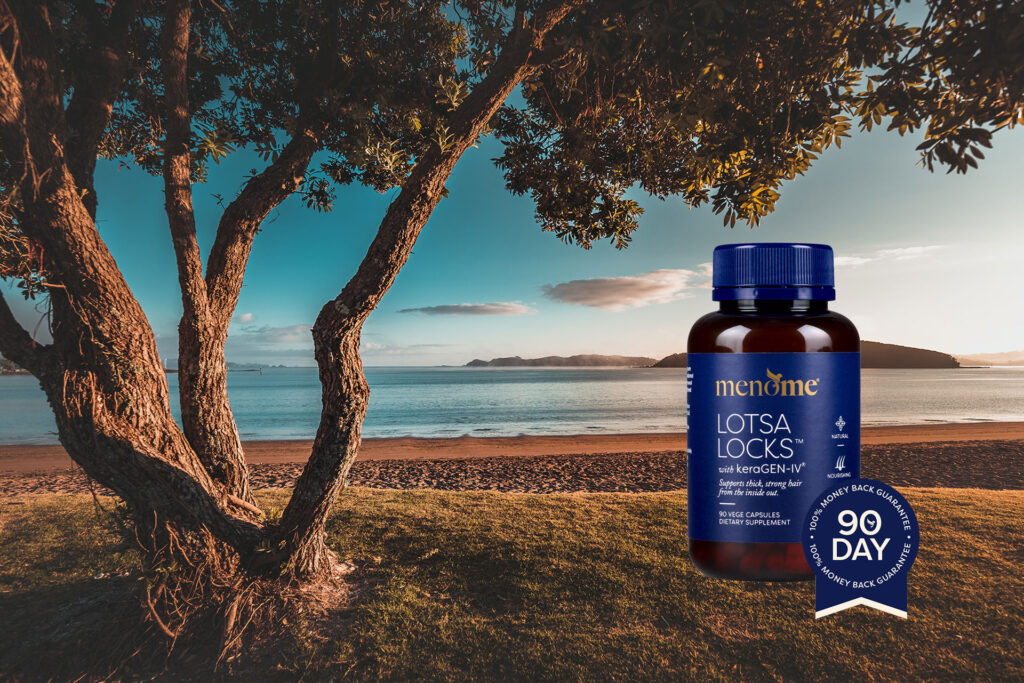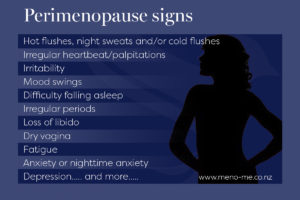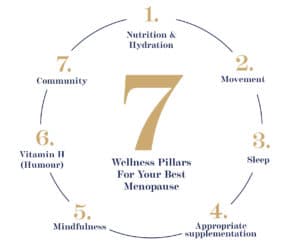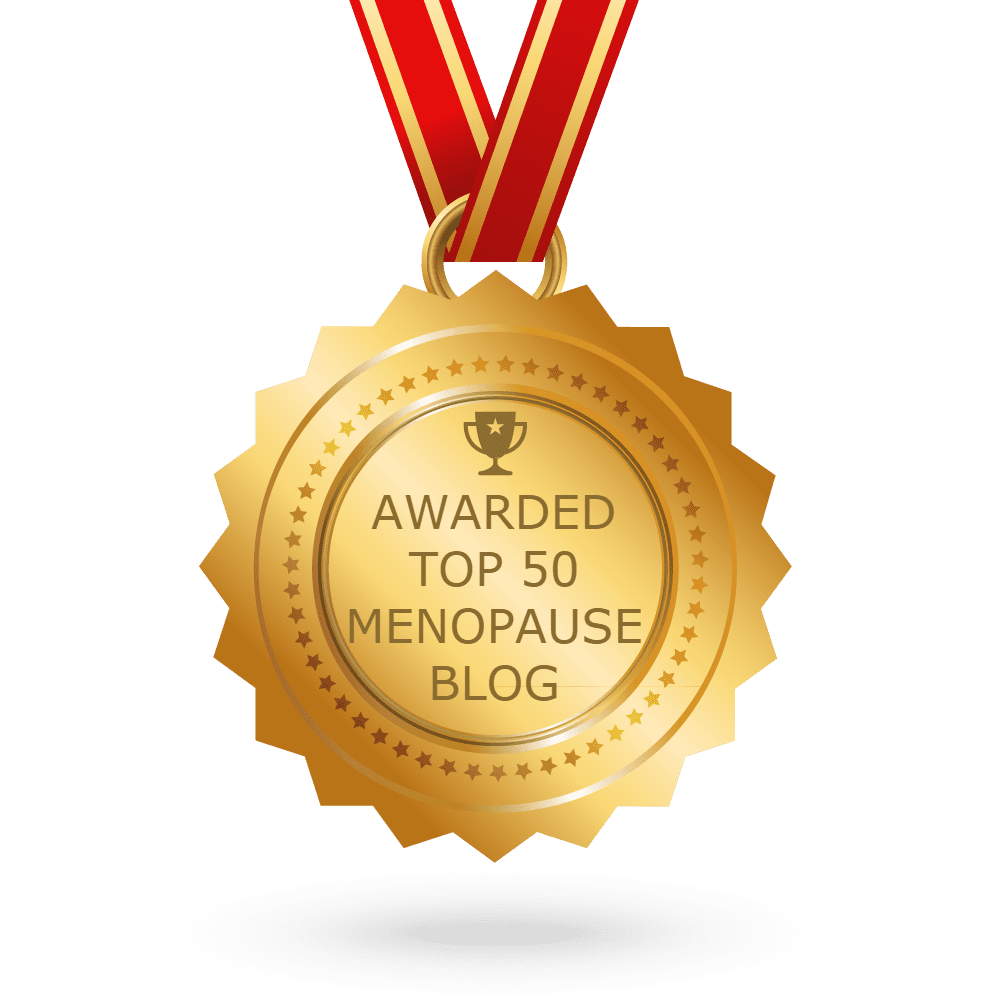One of the most common (and frankly annoying) conditions of menopause is hair thinning, weakness and loss – when the reality is most of us want thicker hair. Always. It’s like our bodies didn’t get the memo that we’re trying to look fabulous through midlife, not lose our crowning glory.

As a result of these hormonal changes, more than half of women experience changes in hair density during and after menopause. It often creeps up on us (a bit like perimenopause itself) and frequently begins at the part line. Or maybe you’ve noticed your once-mighty ponytail looking more like a sad little twist, or your bun could now be mistaken for a hair accessory rather than actual hair.
The statistics are sobering: research shows that 52.2% of postmenopausal women experience female pattern hair loss¹, while studies indicate that more than 50% of females will experience noticeable hair loss at some point in their lives².
And while it’s not uncommon to see men with receding hairlines or bald heads, it’s less socially acceptable for women. The emotional impact can be huge—because let’s face it, our hair is often tied to how we feel about ourselves.
The Hair Growth Cycle: A Quick Lesson
Hair actually grows in four stages, and understanding this helps explain what’s happening during menopause:
- Anagen (The Growth Phase) Known as the growth phase, this is when hair is actively growing from the follicle. The follicle is essentially the pore-like component of your skin that nourishes and produces each strand. This phase typically lasts 2-8 years (with an average of 3-5 years).
- Catagen (The Transition Phase) The catagen stage is the resting phase – a brief intermission when the hair cycle pauses and prepares to shed. Think of it as hair’s way of saying “I need a break.” This phase lasts about 2-3 weeks.
- Telogen (The Resting Phase) During telogen, the hair strand is fully formed but no longer growing. It’s just hanging out, waiting for its time to go. This phase lasts approximately 2-3 months.
- Exogen (The Shedding Phase) This is when the hair actually sheds from the scalp. It’s the final farewell as old hair makes way for new growth. The exogen phase can last 2-5 months and overlaps with the early anagen phase of new hair growth. On average, we lose 50-100 hairs per day during this normal shedding process.
Read more about the process here.
How does hair change at menopause?
Here’s where things get interesting (and not in a good way). The hormonal shifts of menopause can cause a shortening or lengthening of any of these phases. The hair follicle itself also changes and may become smaller in what’s called follicular miniaturisation. Translation: thicker hair becomes a distant memory.
Estrogen and progesterone are the heroes of the hair world – they keep hair in the anagen phase longer, encouraging growth and longevity. When their levels plummet during menopause, hair growth slows and hair loss becomes more pronounced. Meanwhile, your body decides to produce more androgens, which cause hair follicles to shrink and accelerate hair loss. It’s like a perfect storm, but for your hair.
Research confirms there’s a clear association between menopause and both types of hair loss in women³, making this a legitimate concern rather than something we should just “accept” as part of ageing.
The Natural Solution: LotsaLocks®
(PS I have to confess, I have a bit of brain fog right now and called Paul the wrong name! Can you relate? Red face. Lucky he has a fabulous sense of humour. ☺️)
About LotsaLocks®
Knowing all this—and having experienced it ourselves—we created a natural, evidence-backed solution that works to create denser, thicker hair. Because frankly, we refuse to just accept thinning hair as our menopausal fate.
LotsaLocks® by MenoMe® contains keraGEN-IV®, a specialised keratin protein. Recent research highlights keratin’s potential as a safe and effective hair-growth treatment⁴ – it supports ‘anchoring’ hair follicles, reducing hair fall and promoting denser locks. Hello, thicker hair dreams coming true!
KeraGEN-IV® is rich in cysteine, which is essential for producing glutathione – the master antioxidant that supports shiny, healthy-looking, thicker hair. In fact, it’s like giving your hair follicles a superfood smoothie from the inside out!
LotsaLocks® also contains Biotin, one of the B complex vitamins.
The bonus? You only need one capsule a day, so one bottle lasts three months. No complicated routines or remembering multiple pills – just simple, natural hair support.
We genuinely hope you love LotsaLocks® as much as we do. Get yours here.
